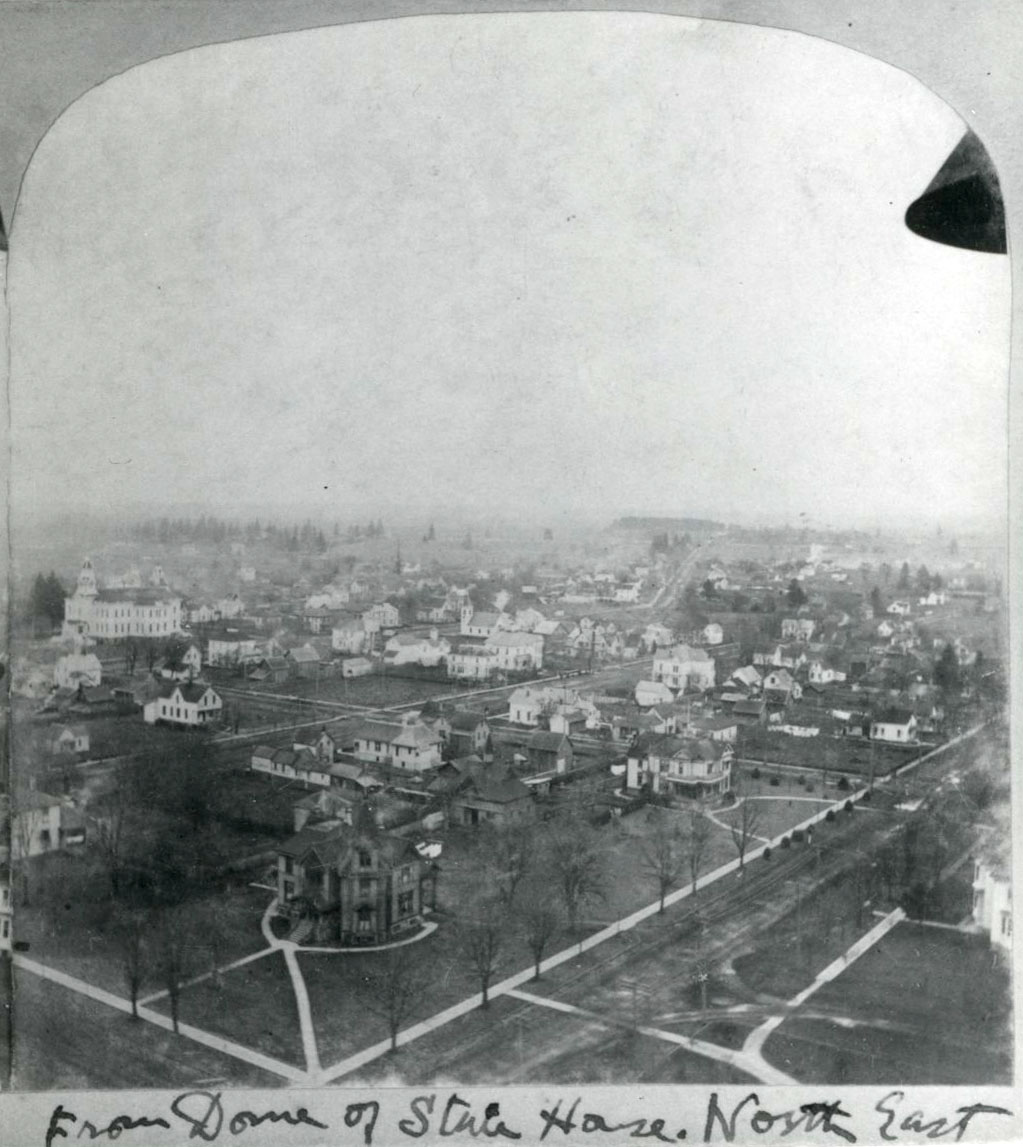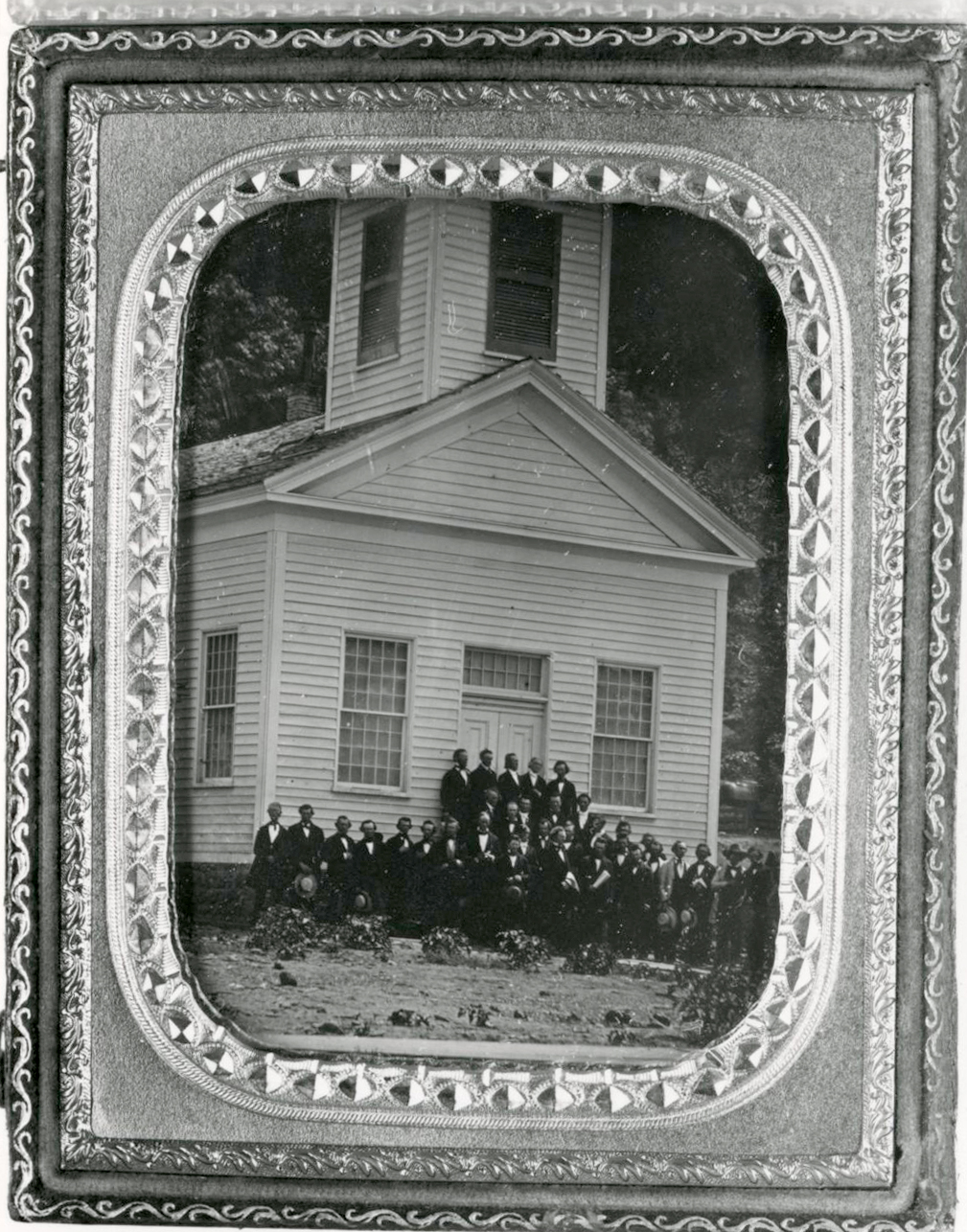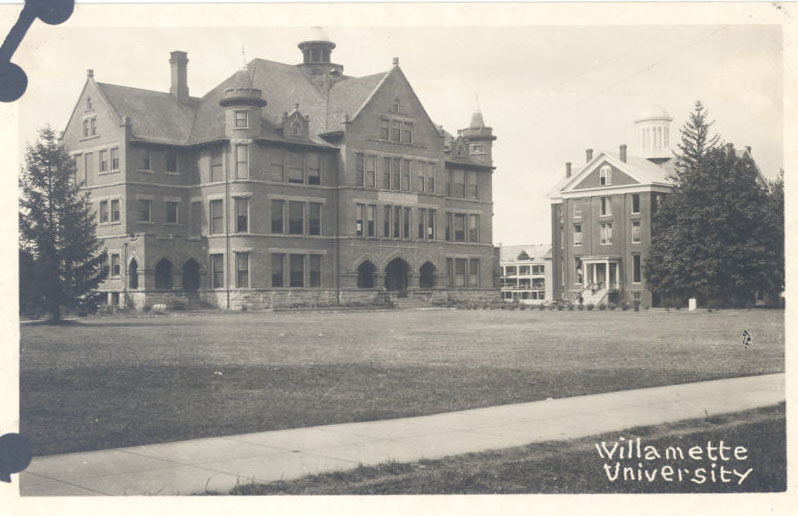Joseph Henry Wythe, M.D., served as president of Willamette University from 1865 to 1868. He presided over the organization of the university’s medical department and was on the first faculty to provide medical education in the Pacific Northwest.
Born on March 19, 1822, in Manchester, England, Wythe came to America in the 1830s. (His father's name was spelled "Wythes"; at some point the son dropped the "s.") In 1842, he was ordained as a Methodist minister. He apprenticed with Philadelphia physicians before graduating from the Philadelphia College of Medicine in 1850. He then joined the faculty there as professor of physiology and pathology. In 1854, he recieved an honorary master of arts degree from Dickinson College (Carlisle, Pennsylvania).
Wythe practiced as a surgeon in Pennsylvania collieries. In 1851, he published The Microscopist, or a Complete Manual on the Use of the Microscope, one of the earliest American texts on the subject. The work went through four editions, the last appearing in 1880. He took an early interest in ovariotomies and in 1865 became the first to perform the operation both on the West Coast—in San Francisco—and in Portland in 1870.
At the outbreak of the Civil War, Wythe was practicing in Mauch Chunk, Pennsylvania, where he helped organize a company of Pennsylvania volunteers. He was appointed assistant surgeon for the U.S. Volunteers in September 1862. Within three months, he was promoted to full surgeon and given the rank of major. After serving on the hospital ship Atlantic and at several other hospitals, he was tasked with organizing a prisoner camp in Virginia. Transferred to Sacramento, California, in 1863, he resigned from the service in October of that year. He remained in California and returned to preaching in San Francisco.
Wythe moved to Oregon in 1865 to serve both as pastor of the Salem Methodist Episcopal Church and as professor of physiology, hygiene, and microscopy at Willamette University. He was president of the university for three years and in 1866 effected the organization of the medical department there. While a movement to establish a medical school in the state had begun in 1864, before Wythe’s arrival Olof Larsell, professor of anatomy at University of Oregon Medical School, wrote that “there can be little question but that [Wythe] furnished the initiative, as president of the university, for another and this time successful attempt to found a medical school.”
When Wythe stepped down as president in 1868, he moved to Portland, where he became pastor of the Taylor Street Methodist Church and engaged in a limited medical practice.
In 1869, Wythe relocated to his old ministry in San Francisco. In the 1870s, he took a position as professor of histology and microscopy at the Medical College of the Pacific. During his twenty-five-year tenure there, he served as professor of medicine and taught undergraduate biology. In addition to teaching and practice, Wythe wrote a number of articles and books, including The Physician’s Dose and Symptom Book (1853), which was published in fourteen editions and was translated into Japanese.
Wythe died on October 14, 1901.
-
![]()
Dr. Joseph H. Wythe.
Courtesy Oregon Hist. Soc. Research Lib., 003279
Related Entries
-
![City of Salem]()
City of Salem
Salem, the capital of Oregon, is located at a crossroads of trade and t…
-
![First Methodist Church (Portland)]()
First Methodist Church (Portland)
Methodist Episcopal Church, Portland's first church, began with seven m…
-
![Olof Larsell (1886-1964)]()
Olof Larsell (1886-1964)
During the formative years of neuroanatomy in the first half of the twe…
-
![Willamette University]()
Willamette University
Willamette University, the oldest university in the West, was founded i…
Map This on the Oregon History WayFinder
The Oregon History Wayfinder is an interactive map that identifies significant places, people, and events in Oregon history.
Further Reading
“Wythe, Joseph Henry.” In Physicians and surgeons of America, Irving A. Watson, ed. Concord, N.H.: Republican Press Association, 1896.
Larsell, Olof. “Joseph Henry Wythe 1822-1901.” Oregon Historical Quarterly 26:4 (Dec. 1925), 424-443.
Larsell, Olof. “Joseph Henry Wythe 1822-1901.” Po








